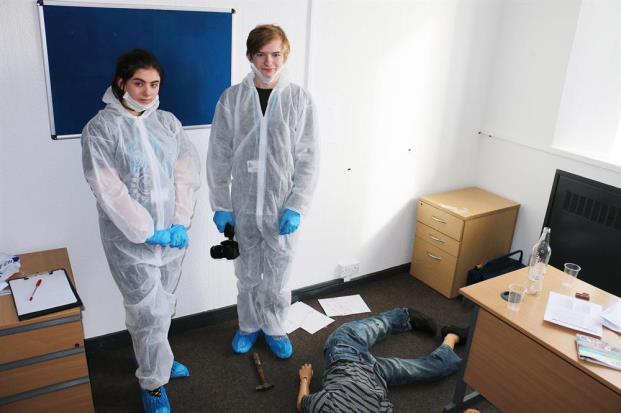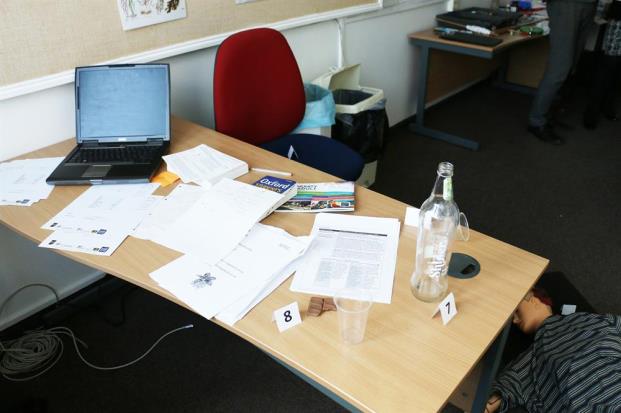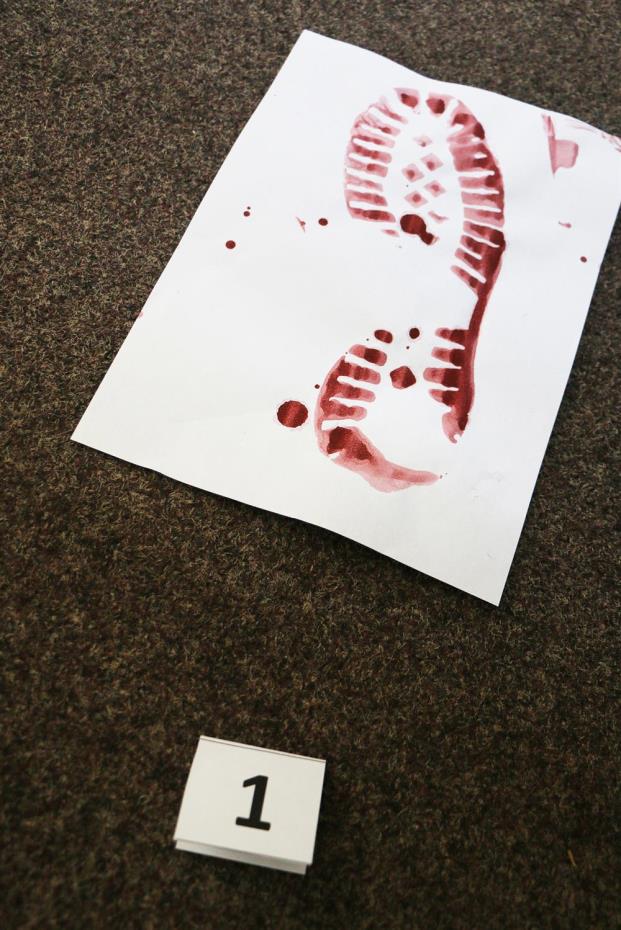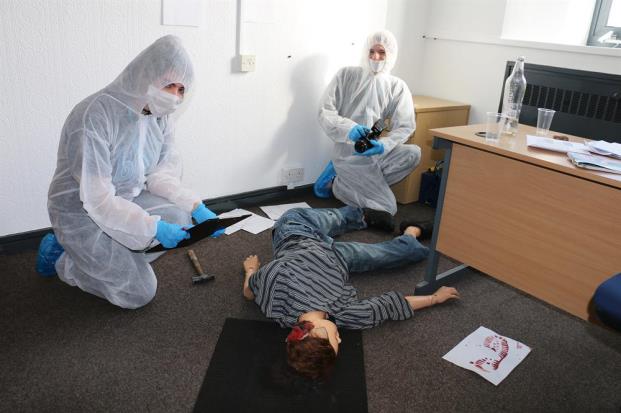Posted: 19/03/19
Budding forensics solve 'murder' at college
Room 303 at West Nottinghamshire College’s Derby Road campus was sealed off with police tape last week, while a murder investigation was underway.
-

Applied Science with Forensics students Megan Shorthouse and Taylor Roberts acted as forensic scientists
-

The crime scene at the college
-

Some key pieces of evidence for the students to analyse
-

A bloodied footprint was a big clue to the assailant
-

The 'body' as it was found at the scene
-

Megan Shorthouse and Taylor Roberts began their evidence gathering
Forensics were called to the scene immediately upon the discovery of a body – however, this was purely a mock murder scene for BTEC Level 3 Applied Science students to test their investigative, forensic and scientific skills.
The class of 18 were alerted to the body of a male in the office space on Tuesday 18 March and they undertook a week of investigations, following the same protocol which police and forensics would do in a real-life case.
The room was sealed and markers were placed around evidence, which included a hammer beside the body which had a large head injury, blood splatters on the wall, a bloodied footprint, a computer with information on screen and remnants of food and drink on the desk.
Students used their skills to measure and photograph pieces of evidence as well as use powders for finger print gathering throughout the room and made their notes.
Students Megan Shorthouse and Taylor Roberts were just two of the acting forensic officers who began their investigations under the watchful eye of investigating officer, tutor Melanie Pykett.
Megan, 16, said: “I’ve always had an interest in forensics and when I saw this course, I knew immediately I wanted to study on it as I’d love to eventually be a forensic scientist. This project has introduced me to a lot of new skills and it’s so interesting.”
Tutor Melanie Pykett said: “This unit has definitely created a lot of enthusiasm amongst the class – it’s the part that everyone has been looking forward to.
“Not every student wants to be a forensic scientist – some have an interest in working in a laboratory, being an audiologist, a paramedic – or like Taylor, he has a passion to work in nuclear engineering.
“Applied science covers all of the sciences and next year the forensic module will cover fire investigation and traffic collision to provide an all-round experience of how forensics are used.”
The case is still ongoing, but students have identified through impressions taken of the hammer that this was the murder weapon. Samples have been taken of blood and saliva, fingerprints, hair and fibres for identification purposes and handwriting for analysis. The students also took an unknown powder and residue to identify for a possible motive.
The next part of the course is to act as an expert witness in ‘court’ to explain what the evidence informs them and demonstrate their scientific understanding.